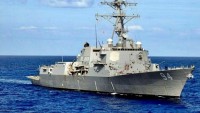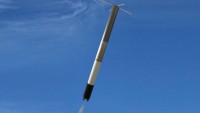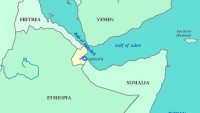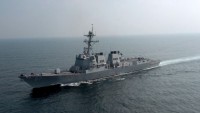Drones are the Future of Undersea Warfare in the US Navy
| Arthur Dominic Villasanta | | Oct 13, 2016 05:12 AM EDT |
(Photo : US Navy) AeroVironment RQ-20 Puma drone being hand launched from a US Navy warship.
The U.S. Navy's attack submarines that will prowl the undersea battlefields of the future will have a lot of help from a fleet of "little friends" -- autonomous underwater drones that allow for both defense and attack at far longer ranges than are currently possible.
Like the planned sixth generation fighters of the U.S. Air Force that might each command a flight of unmanned aerial vehicles, the next generation U.S. subs will command their own small squadron of unmanned underwater vehicles (UUVs) that will both locate the enemy and hunt it to destruction.
Like Us on Facebook
The navy is developing a drone strategy in which multiple undersea drones will conduct intelligence, surveillance, reconnaissance (ISR); search for underwater mines and locate and attack targets while being networked together.
The navy is also looking at what they call "Large Displacement Unmanned Undersea Vehicles" (LDUUVs) to identify enemy submarines or surface warships at distances at very long range. Their numbers and networking will allow their human controllers faster and more efficient access to key information.
This information advantage will give battle commanders more time to make critical decisions. It'll be like being able to look one minute into the future ahead of your opponent.
Combined with satellite technology, these undersea drones (especially the smaller ones that better evade detection) will transmit information back to warships in near real time.
These technological advantages permit far deeper reconnaissance missions into enemy territory and will also negate anti-access/area-denial (A2/AD) defenses such as those being built by Russia in the Baltic Sea and China in the South China Sea.
There's also an aerial drone component to this UUV network. The navy is currently arming more of its warships with an improved version of the AeroVironment RQ-20 Puma, a small, battery powered, hand-launched UAV.
This drone's primary mission is surveillance and intelligence gathering using an electro-optical and infrared camera beyond the horizon. Last August, the navy tested and deployed the RQ-20B Puma aboard more Arleigh Burke-class guided missile destroyers.
TagsU.S. Navy, attack submarines, unmanned underwater vehicles, undersea drones, Large Displacement Unmanned Undersea Vehicles, AeroVironment RQ-20 Puma
©2015 Chinatopix All rights reserved. Do not reproduce without permission
 US Navy Destroys Houthi Radar Stations that Helped in Attack on USS Mason
US Navy Destroys Houthi Radar Stations that Helped in Attack on USS Mason USS Mason Fired Missiles to Destroy Chinese-made Missiles Fired by Houthis
USS Mason Fired Missiles to Destroy Chinese-made Missiles Fired by Houthis US Aerial Drones from Djibouti Hunting Houthi Missile Battery that Attacked USS Mason
US Aerial Drones from Djibouti Hunting Houthi Missile Battery that Attacked USS Mason Houthis Getting Cocky; Try to Sink US Navy Destroyer with Chinese Missiles
Houthis Getting Cocky; Try to Sink US Navy Destroyer with Chinese Missiles
EDITOR'S PICKS
-

Did the Trump administration just announce plans for a trade war with ‘hostile’ China and Russia?
-

US Senate passes Taiwan travel bill slammed by China
-

As Yan Sihong’s family grieves, here are other Chinese students who went missing abroad. Some have never been found
-

Beijing blasts Western critics who ‘smear China’ with the term sharp power
-

China Envoy Seeks to Defuse Tensions With U.S. as a Trade War Brews
-

Singapore's Deputy PM Provides Bitcoin Vote of Confidence Amid China's Blanket Bans
-

China warns investors over risks in overseas virtual currency trading
-

Chinese government most trustworthy: survey
-

Kashima Antlers On Course For Back-To-Back Titles
MOST POPULAR
LATEST NEWS
Zhou Yongkang: China's Former Security Chief Sentenced to Life in Prison

China's former Chief of the Ministry of Public Security, Zhou Yongkang, has been given a life sentence after he was found guilty of abusing his office, bribery and deliberately ... Full Article
TRENDING STORY

China Pork Prices Expected to Stabilize As The Supplies Recover

Elephone P9000 Smartphone is now on Sale on Amazon India

There's a Big Chance Cliffhangers Won't Still Be Resolved When Grey's Anatomy Season 13 Returns

Supreme Court Ruled on Samsung vs Apple Dispute for Patent Infringement

Microsoft Surface Pro 5 Rumors and Release Date: What is the Latest?










